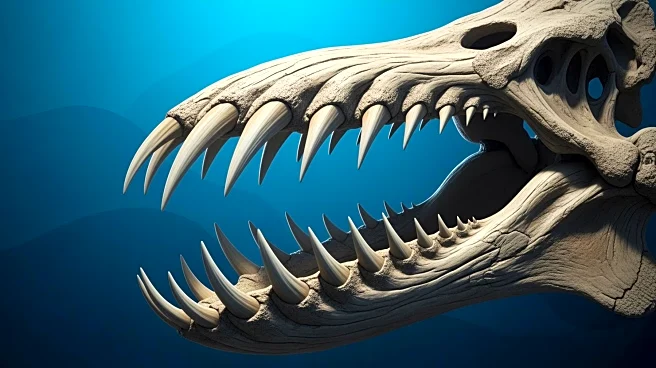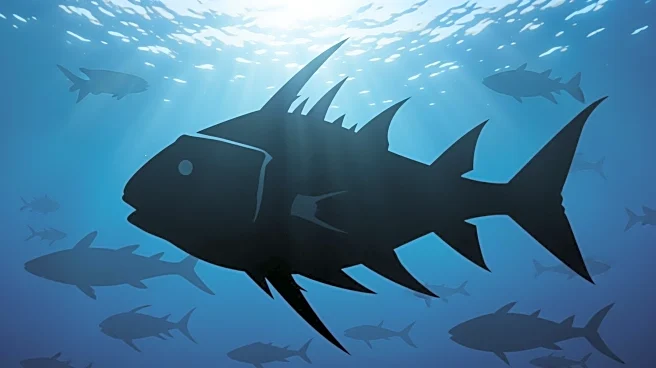What's Happening?
Recent research has shed light on Dunkleosteus, a prehistoric sea predator that lived 360 million years ago in Cleveland's shallow seas. This ancient fish, known for its bone blades instead of teeth, has been
the subject of a study published in The Anatomical Record. The research reveals new details about Dunkleosteus's anatomy, highlighting its similarities to modern sharks and its unique evolutionary traits. Dunkleosteus was part of the arthrodires, a group of armored fish, but stood out due to its cartilage-based skeleton and specialized jaw muscle structure. These features allowed it to strike with precision and force, making it a formidable predator. The study provides insights into the feeding mechanisms of Dunkleosteus and its role in ancient ecosystems.
Why It's Important?
The findings about Dunkleosteus are significant as they challenge previous assumptions about arthrodires, suggesting a greater diversity among these ancient fish than previously thought. Dunkleosteus's unique traits highlight the complexity of prehistoric marine life and its evolutionary connections to modern species like sharks. Understanding its anatomy and feeding strategy offers valuable insights into the ecological roles of ancient predators and the dynamics of prehistoric ecosystems. This research not only enhances knowledge of Dunkleosteus but also contributes to the broader understanding of evolutionary biology and the adaptation strategies of ancient creatures.
What's Next?
Further research into Dunkleosteus and other arthrodires could reveal more about the diversity and ecological roles of ancient marine life. As new fossils are discovered, particularly in regions like Australia, scientists may uncover additional details about the evolutionary history and adaptations of these prehistoric predators. Continued studies could also explore the biomechanical aspects of Dunkleosteus's feeding strategy, providing a deeper understanding of its impact on ancient ecosystems.
Beyond the Headlines
The study of Dunkleosteus offers a glimpse into the complexity of ancient ecosystems and the evolutionary processes that shaped them. By examining the physical traits and feeding strategies of Dunkleosteus, researchers are uncovering how ancient creatures adapted to their environments and influenced the ecological balance. This research underscores the importance of studying prehistoric life to understand the evolutionary history and biodiversity of our planet.















